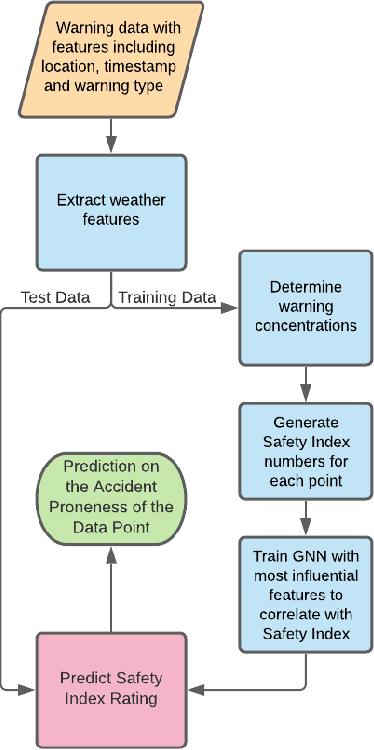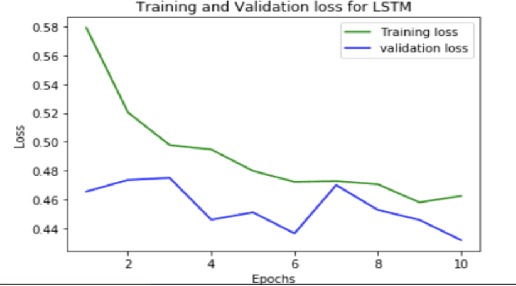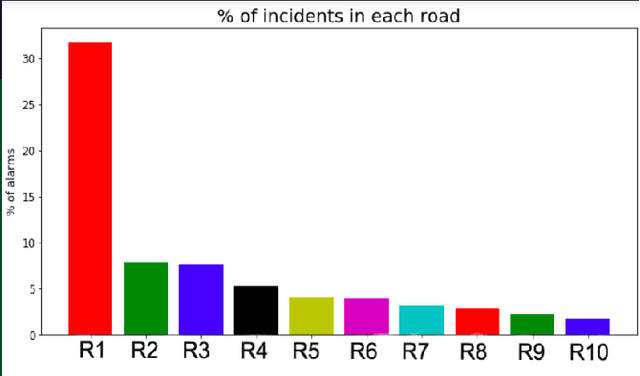Anish Reddy
Road Accident Proneness Indicator Based On Time, Weather And Location Specificity Using Graph Neural Networks
Oct 24, 2020



Abstract:In this paper, we present a novel approach to identify the Spatio-temporal and environmental features that influence the safety of a road and predict its accident proneness based on these features. A total of 14 features were compiled based on Time, Weather, and Location (TWL) specificity along a road. To determine the influence each of the 14 features carries, a sensitivity study was performed using Principal Component Analysis. Using the locations of accident warnings, a Safety Index was developed to quantify how accident-prone a particular road is. We implement a novel approach to predict the Safety Index of a road-based on its TWL specificity by using a Graph Neural Network (GNN) architecture. The proposed architecture is uniquely suited for this application due to its ability to capture the complexities of the inherent nonlinear interlinking in a vast feature space. We employed a GNN to emulate the TWL feature vectors as individual nodes which were interlinked vis-\`a-vis edges of a graph. This model was verified to perform better than Logistic Regression, simple Feed-Forward Neural Networks, and even Long Short Term Memory (LSTM) Neural Networks. We validated our approach on a data set containing the alert locations along the routes of inter-state buses. The results achieved through this GNN architecture, using a TWL input feature space proved to be more feasible than the other predictive models, having reached a peak accuracy of 65%.
 Add to Chrome
Add to Chrome Add to Firefox
Add to Firefox Add to Edge
Add to Edge